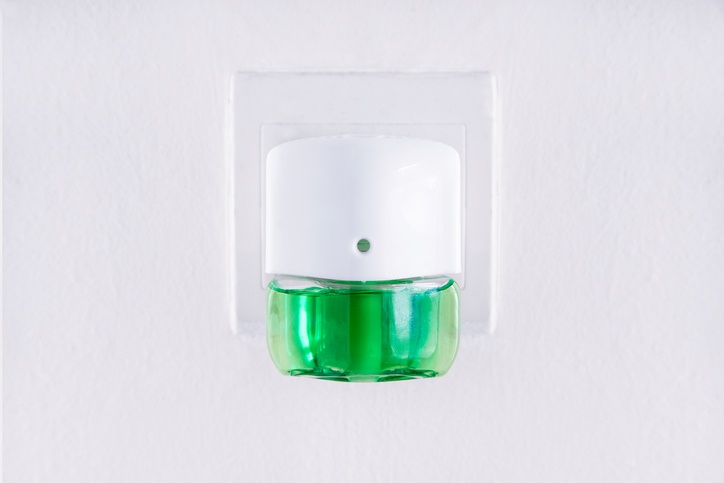
Many people don’t even think twice about using a chemical air freshener.
They plug it in and enjoy “Summer Breeze,” “Autumn Spice,” “Cleansing Rain,” thinking it’s a great way to fill the air with a pleasant scent, without realizing that it could very well be harming their health, as well as the health of their family, pets and unborn children too.
The residual chemicals from common deodorizing products like these contain toxic chemicals that accumulate in ever-increasing amounts in the human body over a period of time, so the health consequences are rarely attributed to them.
During the 1990s, the air freshener industry boomed, after the introduction of “plug-in” type air fresheners which rely on heat induction technology and special heat-activated scented gels, causing a scent to be continually released.
Everyone thought they were so cool – the latest and greatest technology for scenting the home.
Plus, they were fairly cheap, and weren’t an aerosol spray, something that created a big controversy during the previous decade for their harmful effects on the ozone layer. But it turns out, what once seemed rather innocuous, was anything but.
When researchers took a close look at these popular devices, they were found to contain an astounding number of toxic compounds.
The Dangers of Chemical Air Fresheners
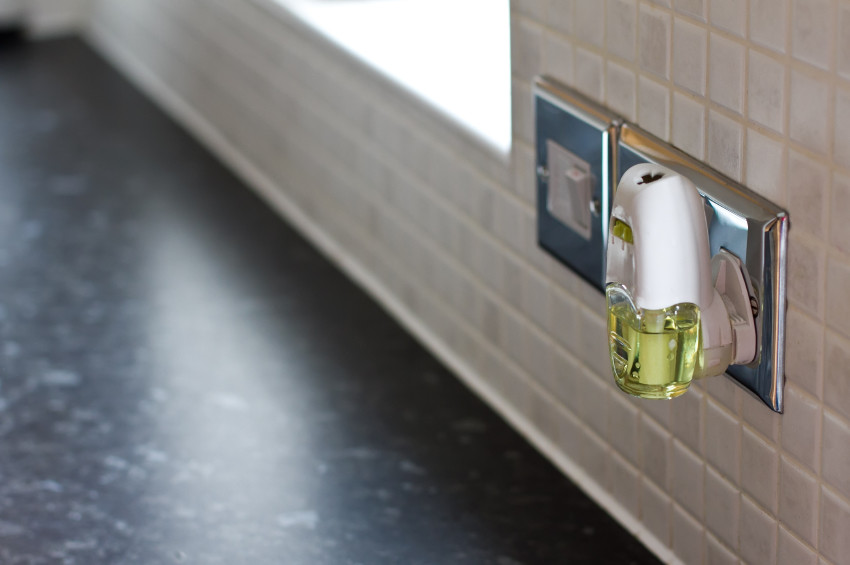
Phthalates
One of the biggest concerns with these air fresheners is phthalates. When the Natural Resources Defence Council (NRDC) tested 14 different air fresheners, it was discovered that 86% contained these chemicals that can cause birth defects, hormonal abnormalities, and reproductive problems.
The organization stated that “most phthalates are well known to interfere with the production of the male hormone testosterone, and have been associated with reproductive abnormalities”.
Phthalates are also listed in the State of California’s list of toxic substances “known to cause birth defects or reproductive harm”. The NRDC also warned that airborne phthalates can lead to allergic symptoms and asthma – and, that’s even in trace amounts.
It reports that this includes air fresheners marketed as “unscented” or “all-natural.” They all contain these hazardous chemicals.
A 2003 study published in Environmental Health Perspectives suggested that environmental levels of phthalates are linked to altered DNA integrity in human sperm.
This research included 168 males, recruited from the Massachusetts General Hospital Andrology Laboratory, who provided urine and semen samples. The results indicated that those who had phthalate in their urine showed DNA damage in their sperm.
There are other possible risks of phthalates too, though they’re still being studied. They’ve been linked to serious concerns like kidney and liver toxicity, as well as cancer. Preliminary animal studies have suggested that those adverse effects are a genuine concern for humans.
Formaldehyde
Formaldehyde is well-known as a human carcinogen. This colorless, flammable chemical used often used in building materials and to produce a variety of household products like permanent-press fabrics, plywood, glues, particleboard, and air fresheners.
It’s been definitively linked to both throat and nose cancer and is known to cause chronic irritation of airways and the throat that can potentially lead to a dangerous infection, asthma, frequent nosebleeds and other respiratory problems, according to the U.S. government National Toxicology Program.
These risks are even greater for infants, the elderly and those who have a compromised immune system.
A study published in the International Journal of Public Health in 2013 revealed that pregnant women who had used air fresheners were “significantly more likely to have babies that suffered from wheezing and lung infection.”
Naphthalene
Compounding the risk that formaldehyde brings, most major plug-in air fresheners brands have been shown to contain a chemical called naphthalene.
Lab studies, conducted on rats, have found that it can cause cancer in the lungs and tissue damage. While it’s still being explored, experts believe that it likely causes similar effects in humans.
Volatile Organic Compounds
Volatile Organic Compounds, or VOCs, have also been found in plug-in air fresheners. These compounds have a low boiling point, which forms a vapor or gas at room temperature.
While that makes them good for dispersing scents, they also come with risks, having been associated with a greater risk of asthma, especially in children.
The majority of air fresheners contain a VOC known as 1,4-Dichlorobenzene, a chemical found in the blood of 96% of Americans. It’s a known carcinogen that’s been associated with lung damage and is also an E.P.A. registered pesticide.
It works by attacking the receptors in the nose, which eliminates the sense of smell. This is the reason why the air fresheners actually seem to “freshen” a room – the makers of these products are destroying their customers’ sense of smell.
The chemical damages the mucous membrane, and while the effect has been claimed to be just temporary, there haven’t been any long-term studies conducted to test the effects of chronic exposure.
Dichlorobenzene has also been the reason behind the death of many pet birds. It’s been linked to countless birds’ deaths, with the animals passing away shortly after air fresheners were used near them.
It makes sense, as it’s the main ingredient used to make the well-known pesticide DDT as well as its cousins, DDD and DDE. Exposure can result in some rather horrific health issues that never completely go away – and inhaling these chemicals is actually said to be far more dangerous than ingesting the same amount.
No Amount is Really Safe
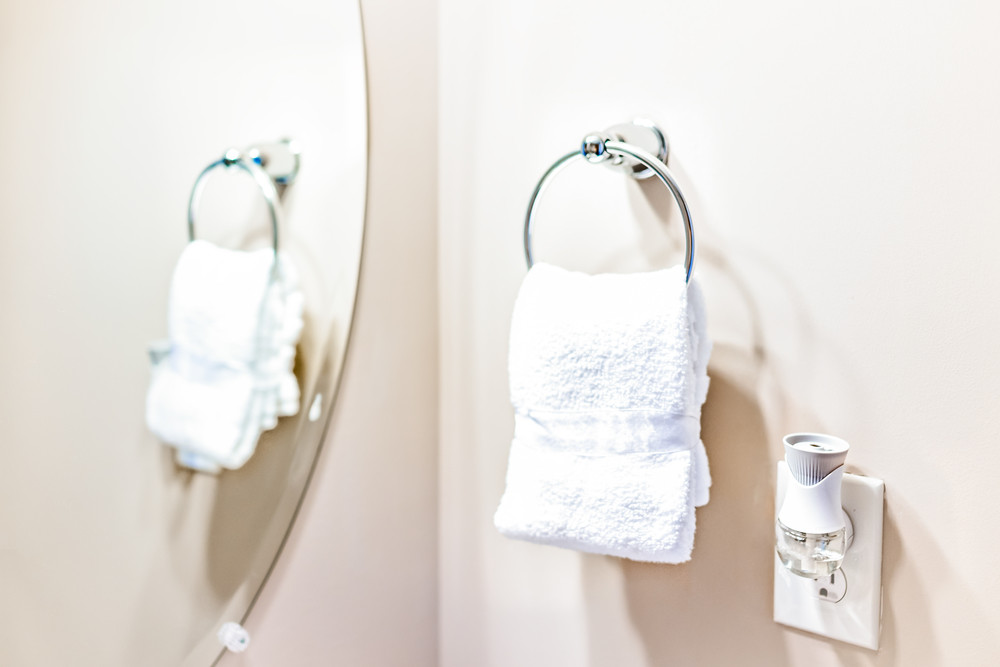
While you might think that using them only occasionally won’t do much if any damage, a 2006 study showed that exposure as little as once a week may increase a person’s odds of developing asthma by as much as 71%, and can also contribute to a higher rate of pulmonary disease.
The researchers also found that those with high blood levels of the chemical 1,4-Dichlorobenzene were more likely to have declining lung function.
No Safety Regulations
Most people assume that these products are required to go through rigorous safety testing before they can be sold to consumers, but that’s far from true. The industry is self-regulated, which simply means, it isn’t regulated at all.
Air fresheners are believed to be even further outside the jurisdiction of regulators than most products. Chemical companies don’t need any type of permission from an authoritative body before they can sell their air fresheners.
It was months before the FDA warned Clarcon Biological Chemistry Laboratory that its line of what they claimed to be antibacterial products actually contained live bacteria. Eventually, their “antibacterial” hand sanitizer was recalled, but it only happened after the public became aware, and it resulted in PR problems for the company.
It was a voluntary recall, which also meant the FDA did not take any action against Clarcon either. Rather frightening, considering that, according to the FDA itself, a number of samples of over-the-counter topical antimicrobial skin sanitizer and skin protectant products sold by Clarcon were found to have high levels of various bacteria, including some that are linked to unsanitary conditions.
Some of the bacteria were also known to potentially cause infection so severe it would require surgical or other medical attention, and could even result in permanent damage.
Homemade Air Freshener Alternatives
If you haven’t done so already, it’s time to get rid of those plug-in air fresheners immediately.
For those who have pets or other sources of household odors, while it can seem like using air fresheners is a necessity, that doesn’t mean that you have to purchase those toxic air fresheners sold at the store. There are a number of outstanding, homemade alternatives.
Baking Soda Air Freshener
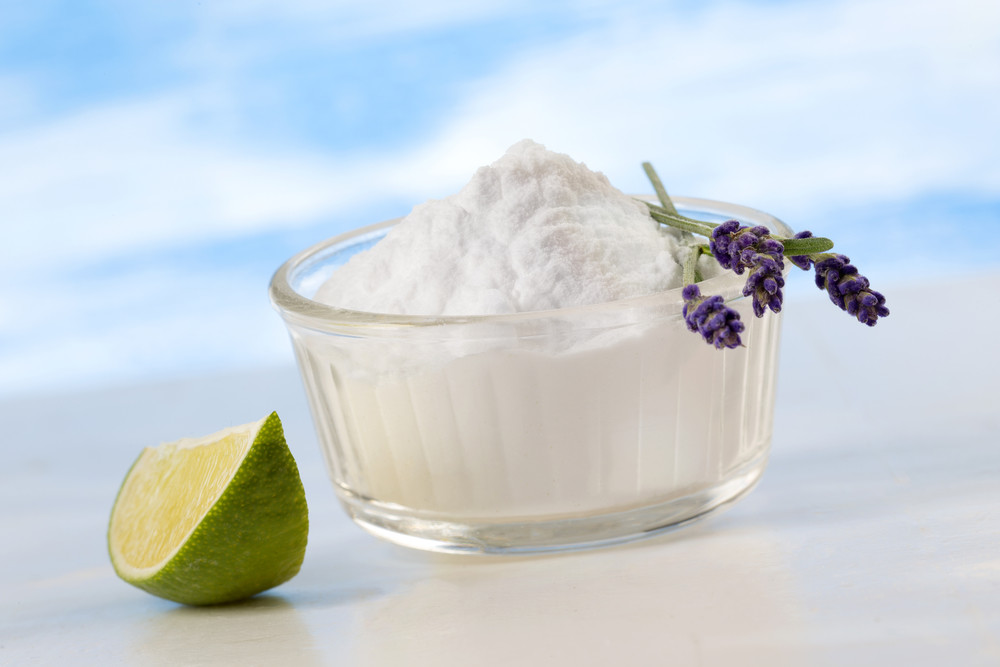
Baking soda has practically an endless number of uses around the house but it’s probably most effective as an odor absorber, which is why it’s ideal for a natural alternative to those chemical fresheners.
All you need is:
- Baking soda
- Some of your favorite essential oils
- A small glass jar with a vented lid (you can use a half-pint mason jar and place a piece of construction paper with a few holes cut out to use in place of the lid)
Instructions:
- Fill the jar with baking soda and then add the essential oils, using 6 drops per tablespoon of baking soda.
- Place the jar in the room you want to naturally freshen and deodorize the air. You may want to make several of these, and strategically place them throughout your home.
- When the baking soda begins to harden, or gets clumpy, that usually indicates that it’s absorbed moisture so it won’t be as effective at neutralizing odors. That’s when you’ll need to replace it.
An Essential Oil Diffuser
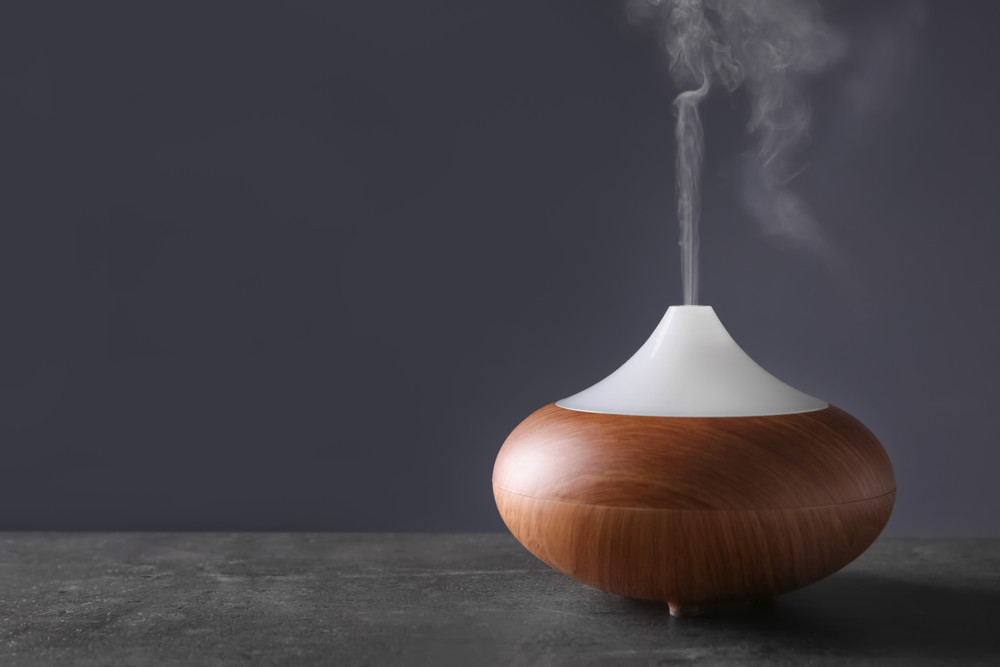
An essential oil diffuser allows you to naturally scent your home using any type of essential oil you like. It’s convenient and inexpensive too.
A diffuser is a device that allows the essential oils to evaporate and circulate their scent throughout the environment by distributing essential oil molecules through the air.
Those molecules are then inhaled and come into contact with one’s nerves, sending them directly to the brain, which can also provide many different benefits to your emotional and/or physical health in addition to scenting the room.
You can completely transform the character of a room in just a few minutes using just a few drops of an essential oil.
The oils come without any potentially harmful side effects. Some can purify the air in your home, repel insects, improve the quality of your sleep and so much more.
The list is practically endless.
Plus, you can create your own personalized scents and blends out of several different essential oils once you get familiar with their scents. You can use various oils for different situations, such as lavender to help you feel calmer or to sleep better at night, or when you need to study, rosemary to improve your memory, for example. Tea tree oil is great for purifying your home and combating allergens.
All you need to get started is an essential oil diffuser (we tested the five most popular and reveal our favorite here) and essential oils (these are the best brands).
A Simmer Pot
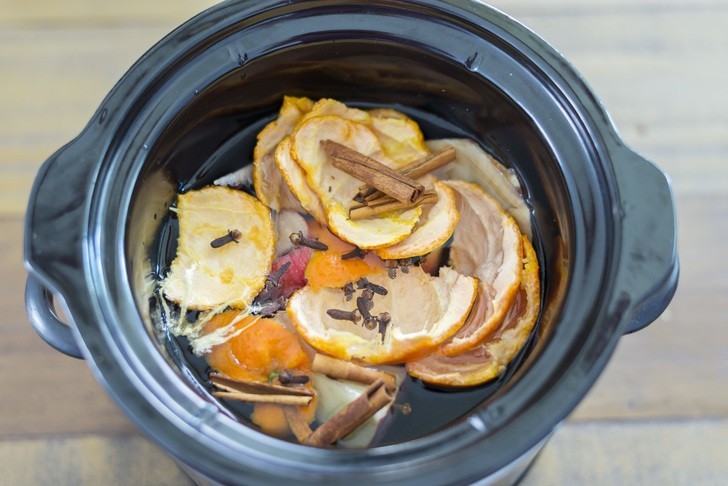
You might remember your grandmother having a wonderfully scented home thanks to a simmering pot.
A small pot with apples and cinnamon sticks were popular for capturing the essence of the autumn season before those chemical air fresheners were around.
It’s time to return to those days – you can use a simmering pot in any season by changing up the ingredients. They’re an incredibly easy, cost-effective way to scent your home just about any way you’d like.
Instructions:
- Gather up ingredients – you can use anything you’d like, such as a combination of apples, cinnamon sticks, and cloves or perhaps dried eucalyptus and peppermint leaves dried rosemary and lavender.
- Fill up a small saucepan (or slow cooker) with water, about 3/4 full and bring it to a boil.
- Add the ingredients and boil for another 2 to 3 minutes.
- Turn the heat down to a simmer, and allow the scent to permeate the air.
- When the water starts to get low, just add more.
Here’s 3 recipes for a Fall scented simmer pot.
